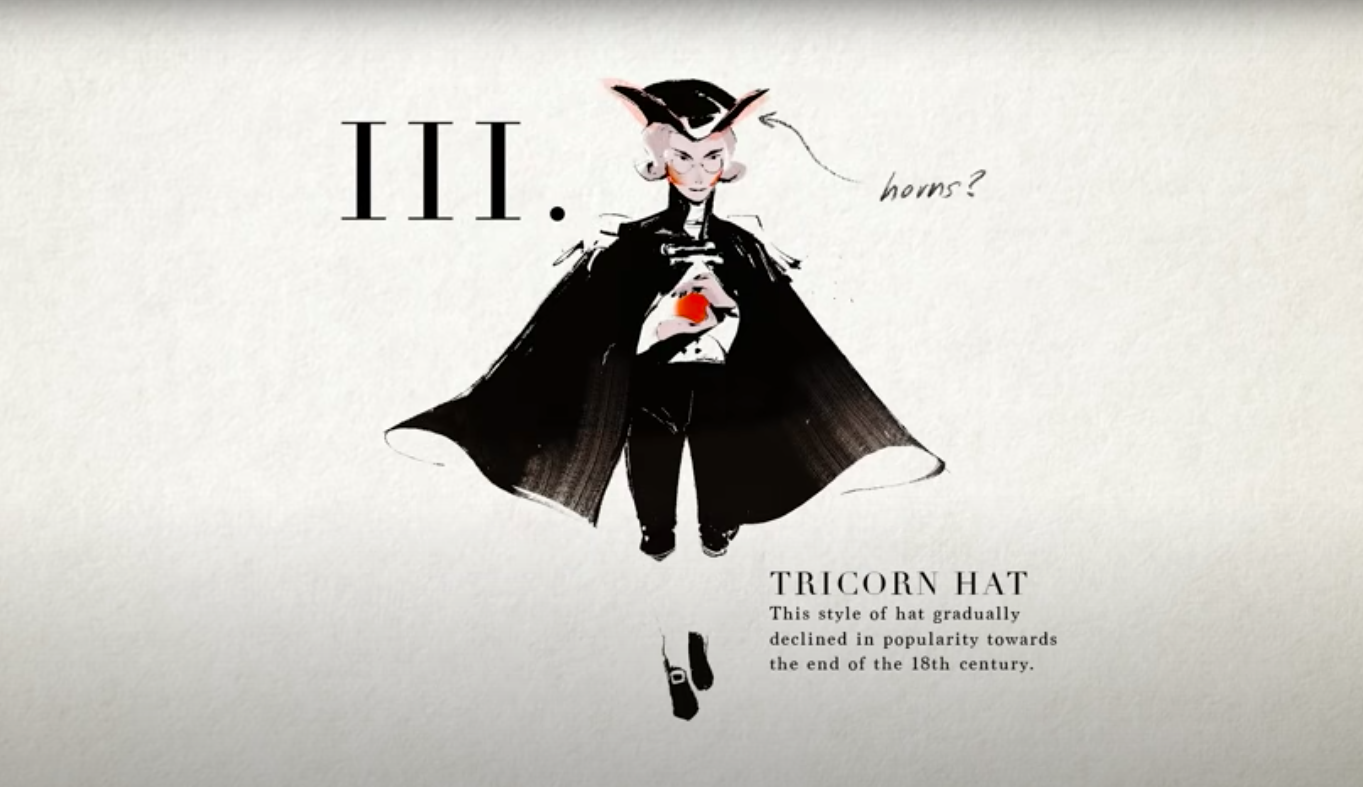This content originally appeared on Open Culture and was authored by Ayun Halliday
Robespierre is an immortal figure not because he reigned supreme over the Revolution for a few months, but because he was the mouthpiece of its purest and most tragic discourse.
– François Furet, Interpreting the French Revolution
Cal Arts animation student Michelle Cheng’s character design primer, above, draws attention to the many hats an animator must be prepared to wear when bringing to life a figure who actually existed:
Artist…
Researcher…
Costume designer…
Hairstylist…
Psychologist…
Her choice of Maximilien Robespierre, one of the most influential figures of the French Revolution, suggests that Cheng enjoys a challenge.
As historian Peter McPhee writes in The Robespierre Problem: An Introduction:
Was Robespierre the first modern dictator, icily fanatical, an obsessive who used his political power to try to impose his rigid ideal of a land of Spartan ‘virtue’? Or was he a principled, self-abnegating visionary, the great revolutionary martyr who, with his Jacobin allies, succeeded in leading the French Revolution and the Republic to safety in the face of overwhelming military odds?
Cheng believes an animator’s first job is to understand any given character’s role in the larger story, and her research suggests that “there is never just one story.”
In the end, animators make choices based on the narrative they wish to push, enlisting palettes and styles that will support their favored approach.
Cheng went into this assignment perceiving Robespierre to be “a prime example of situational irony, a fanatical dictator who had sent hundreds of people to the guillotine only to be guillotined himself in the end.”
This, she readily admits, is a two-dimensional understanding.
Though he only lived to thirty-six, the man evolved. Robespierre, the symbol of the Reign of Terror, is distinct from Robespierre the individual citizen.
This duality led her to concoct a range of Robespierres – evil, good, and neutral.
A not particularly distinguished-looking fellow, he was widely acknowledged to be fastidious about his appearance.
All three animated characters are garbed in the neoclassical fashion typical of a progressive gentleman of the period – shirt, breeches, stockings, waistcoat, coat, a lacy cravat, and a curled wig. 
Cheng, in consultation with fellow Cal Arts animator Janelle Feng, equipped the “evil” version with an ominous, figure-concealing black cloak lined in blood red. Angles and points are emphasized, the face draws on his opponents’ sinister descriptions of his habitual expressions, and subtle nods to punk and Goth cater to modern sensibilities.
The “good” version employs rosy Rococo hues to lean into the Robespierre his friends and family knew – a poet who loved his pet pigeons.
History prevents Cheng from ditching his signature wig entirely, but she granted herself some leeway, softening it for a more natural look.
This Robespierre is as dreamy as any Miyazaki hero.

Between these two poles is the “neutral” Robespierre, perhaps the most challenging to depict.
Feng took the lead on this one, seeking to strike a balance between his reportedly unprepossessing appearance and his revolutionary fire.
She retained the striped coat of his most iconic portrait, but updated it to a cool green palette. His nickname – the Incorruptible – is embodied in his firm comportment.

The video draws to a close with a review of the various ways Robespierre has been depicted in art and film over the years, a vivid reminder of Cheng’s assertion that “there is never just one story.”
See more of Michelle Cheng’s animations on her lemoncholy YouTube channel.
See more of Janelle Feng’s French Revolution era designs here.
Related Content
14,000 Free Images from the French Revolution Now Available Online
Enter a Digitized Collection of 38,000 Pamphlets & Periodicals From the French Revolution
– Ayun Halliday is the Chief Primatologist of the East Village Inky zine and author, most recently, of Creative, Not Famous: The Small Potato Manifesto and Creative, Not Famous Activity Book. Follow her @AyunHalliday.
This content originally appeared on Open Culture and was authored by Ayun Halliday
Ayun Halliday | Sciencx (2023-01-13T09:00:17+00:00) A Creative Animation Tells the Story of Maximilien Robespierre, One of the Most Influential Figures of the French Revolution. Retrieved from https://www.scien.cx/2023/01/13/a-creative-animation-tells-the-story-of-maximilien-robespierre-one-of-the-most-influential-figures-of-the-french-revolution/
Please log in to upload a file.
There are no updates yet.
Click the Upload button above to add an update.


